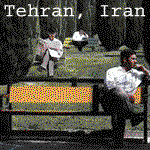On the origins of targeted assassination
On December 27, 1947, about a month after the decision by the UN General Assembly to establish two countries, one Jewish and one Arab, and before the bloody clashes between the two nations turned into a war - Israel's War of Independence - the Haganah (the pre-state army) issued an order for what was called Operation Zarzir (Starling). In this order one can see the first comprehensive, operational plan for what would several decades later be called "targeted assassinations."
Although assassinations of Palestinian murderers have existed since the beginning of the Israeli-Palestinian conflict, Operation Zarzir was exceptional. For the first time, a nationwide program involving such assassinations was planned, with operational rules. Targeted assassinations are not, therefore, as we tend to believe, a result of the intifadas or of the suicide attacks.
The Operation Zarzir order was sent to the headquarters of the Fourth Battalion of the Palmach (the Haganah's elite strike force), which included special units. Among these units was the Arab department (Jewish soldiers disguised as Arabs, today called mistaravim), which was then called Shahar (Dawn). Its commander during that period was Danny Agmon of Kibbutz Ein Herod, who died recently. Before his death he was engaged in writing a book and collecting historical documents, and with his help I found out about Zarzir. Agmon served in the past as the head of the bureau of then Palmach commander Yigal Alon. Later, in the Israel Defense Forces, as a colonel, he headed the department that studied the enemy.
The order for launching Operation Zarzir begins with the words: "You have been instructed to assassinate, without any additional confirmation, the following people ..." The list of candidates was long and testified to the political-strategic intentions of the Haganah on the eve of the War of Independence.
As opposed to what is happening today, at that time there was no widespread public debate concerning the order. However, it is interesting to note the cautionary measures and the limitations imposed on those involved in such operations. The orders emphasized the need to act cautiously so as not to arouse an extreme Arab reaction. In addition, there was a directive not to carry out the assassination near "weak Jewish settlements." Regarding one of the candidates for assassination, Subhi al-Khadra, it said that he should not be killed in the city of Safed; no explanation was given. Those carrying out the operations were directed not to perform the assassination "in places holy to Islam, or in hospitals." There was also a piece of advice from headquarters, to the effect that "the operation should look like an Arab action" - in other words, as though it was an Arab who had murdered an Arab.
All the brigade commanders back then were asked to assist in the Zarzir actions. The commander of the whole operation had to report on his activities once a week. On January 5, 1948, commander Alon ordered Agmon to give a direct and regular report of the assassinations to Moshe Dayan. The two arranged to meet weekly. Agmon told me that during the first two encounters, he had a feeling that Dayan was not paying attention to him and was not interested in the operation. "I felt that Dayan was barely answering my questions." For that reason, Agmon did not show up for the third meeting. Dayan complained that he was not receiving reports of the assassinations, and Alon, who was then senior to Dayan, ordered Agmon again to report to Dayan in detail.
Before the war broke out in full force, the country was divided between two officers who were in charge of the assassinations. When the war was over, the assassination activities ended.
The original list of candidates for assassination included 23 Arab leaders and high-ranking officers from all over the country. The largest group was in the Jerusalem area; the second largest was in Jaffa. Several of them, like Emile Ghouri, were political leaders. Others were prominent military leaders, such as Hassan Salameh and Abdel Khader al-Husseini, both of whom were ultimately killed during battles with Israel.
The means for assassination were primitive. The commandos did not even dream of firing missiles or using helicopters or unmanned aerial vehicles. During the late 1950s, Israel returned to "targeted assassinations" on a very small scale. The effort was directed against Egyptian intelligence people and attaches involved in organizing Palestinian gangs for the purpose of murdering Israelis. This story came to an end during the Sinai Campaign in 1956.














0 Comments:
Post a Comment
<< Home